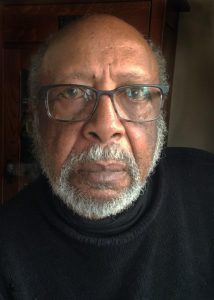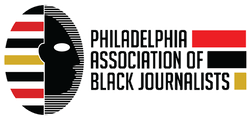DON CAMP: RECOLLECTIONS ON FOUNDING OF ABJ

Don Camp was a photographer at the Philadelphia Bulletin who advocated for photographers to become members. This interview was conducted by PABJ member Antoinette Lee in 2017.
_____________________________________________
“It started with a group of us at the Evening Sunday Bulletin. The first conversations of it were at a little bar and restaurant that was across the street from the Bulletin. We were around 30th and Market Street. We would go and have lunch and sometimes dinner depending on the shift that we were working.
We had maybe five or six men and women working in the newsroom. I was the only photographer and I think there might have been five writers. But none of us were editors. I didn’t wanna be an editor. I really liked being on the street, but some of the writers did wanna be editors.
We still didn’t like the stories. We didn’t like the assignments. If we formed an organization, we could have a stronger voice. The other thing that was happening was at the Bulletin we were not a union paper and because we weren’t a union paper we were really very fallible.
The Inquirer had a good strong union and so they were much less fallible than us. We couldn’t form a union, but we felt that we could possibly do this association of Black journalists.
Journalists at the Bulletin: Sam Pressley; Laura Murray; James Brown, who worked in editorial; Elmer Smith.
We reached out first of all to two people, one at the Daily News and one at the Inquirer. I understand that some of the television people were reached out to, as well. They were really pretty well established. They really didn’t wanna take the risk that we were taking.
Acel Moore was well established. So we reached out to him and he reached back. We reached out to Bill Peronneau (a photographer at the Daily News). We were the two photographers in the group.
I mention that because photographers kind of had a lesser standing. We weren’t in a sense real news people. We provided art, which still annoys me because if you don’t know how to tell a story with pictures, then you’re not a photographer. So, we don’t write stories. We photograph stories and you gotta have a skill to do that.
We were really kind of in between the writers and trying to get other mediums recognized – television, radio and the Tribune. We wanted to be more inclusive. Because I was considered lesser than the writer, I didn’t want others to be considered lesser than us. Bill (and I) were kind of pulling, rooting for other people to come in.
We were meeting at odd hours because all of us were really on strained schedules. There would be times we would meet in someone’s house at 11 at night or midnight because that’s when all of us got off and that’s when all of us could meet.
Bill Peronneau and I established an award for photography. And we wanted (famous African American photographer) James Van Der Zee to put his name on it. There’s an interesting reason as to why we picked James Van Der Zee. He had a reputation as a New York photographer (and he) belonged in the American photography archives. Beautiful, very beautiful work. When we look back at the history of photography – European, American – there were people that were doing similar work that were being recognized as part of the history. And James Van Der Zee was doing that kind of work.
And then they came out with this (book) naming the photographers who belonged in American history of photography. Not one Black photographer (was mentioned) and because he had been left out and both of us were really pretty angry, we wanted to establish at least the James Van Der Zee Award for this group. Bill and I went to New York, met with him and got his permission to do it. I don’t know if he came down or not. We invited him.
For a few years, the James Van Der Zee Award was given for photography. I think (the first recipient) was to a college student. (At ABJ’s banquet in 1976, Van Der Zee was awarded the J. Orrin Evans-Art Peters Journalism Award.)[1]Chuck Stone (February 17, 1976). “ABJ Honors 2 So More Can Follow.” Philadelphia Daily News. via newspapers.com. Retrieved May 13, 2022.
A funny story about Chuck Stone and how he became the first president is that we needed a president and we knew none of us could be the president. There was pressure on us not to (organize). The group of us at the Bulletin, we did meet with the managers and that was terrifying – because I was a father with two daughters, just starting a career, everybody else was there for a year or so. We had to be good to get there. But we weren’t sure how secure we were.
So we decided to meet with the Bulletin management to let them know we weren’t doing this behind (their) back. I don’t know what we explained to them, but we had to explain to them that … we wanted their support or at least leave us alone. I know Claude (Lewis) was there, and later on really supported us and protected us. (Claude) was a beautiful writer for the Bulletin.
Chuck Stone was a columnist and I think management at the Daily News, and he had this thing going for amnesty. So a lot of people who had committed crimes – and police were hunting them – they found they could turn themselves in to Chuck Stone and not have the police brutality that was normally afflicted on them. He got a lot of notoriety out of that.
And we decided that he should be the president. I don’t know who all came in but we had about 10 or 15 people.”
Sources[+]
| ↑1 | Chuck Stone (February 17, 1976). “ABJ Honors 2 So More Can Follow.” Philadelphia Daily News. via newspapers.com. Retrieved May 13, 2022. |
|---|
